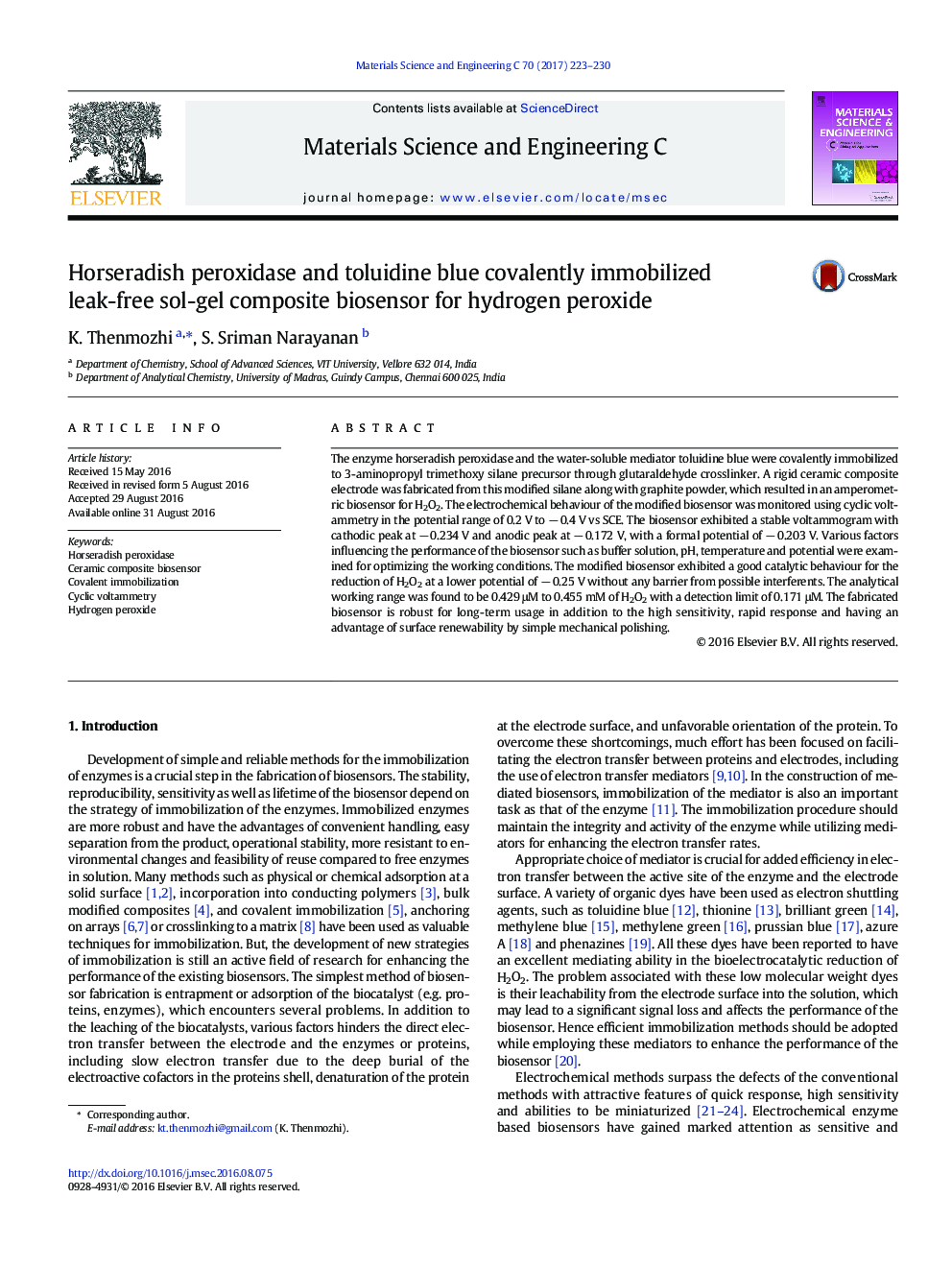| Article ID | Journal | Published Year | Pages | File Type |
|---|---|---|---|---|
| 6481360 | Materials Science and Engineering: C | 2017 | 8 Pages |
â¢Water soluble HRP and Toluidine blue were covalently immobilized in sol-gel matrix.â¢Leak-free renewable ceramic composite biosensor has been fabricated.â¢The biosensor successfully analysed H2O2 at a low potential of â 0.25 V (vs SCE).â¢The biosensor exhibited good long-term stability and surface renewability.
The enzyme horseradish peroxidase and the water-soluble mediator toluidine blue were covalently immobilized to 3-aminopropyl trimethoxy silane precursor through glutaraldehyde crosslinker. A rigid ceramic composite electrode was fabricated from this modified silane along with graphite powder, which resulted in an amperometric biosensor for H2O2. The electrochemical behaviour of the modified biosensor was monitored using cyclic voltammetry in the potential range of 0.2 V to â 0.4 V vs SCE. The biosensor exhibited a stable voltammogram with cathodic peak at â 0.234 V and anodic peak at â 0.172 V, with a formal potential of â 0.203 V. Various factors influencing the performance of the biosensor such as buffer solution, pH, temperature and potential were examined for optimizing the working conditions. The modified biosensor exhibited a good catalytic behaviour for the reduction of H2O2 at a lower potential of â 0.25 V without any barrier from possible interferents. The analytical working range was found to be 0.429 μM to 0.455 mM of H2O2 with a detection limit of 0.171 μM. The fabricated biosensor is robust for long-term usage in addition to the high sensitivity, rapid response and having an advantage of surface renewability by simple mechanical polishing.
Graphical abstractDownload high-res image (220KB)Download full-size image
